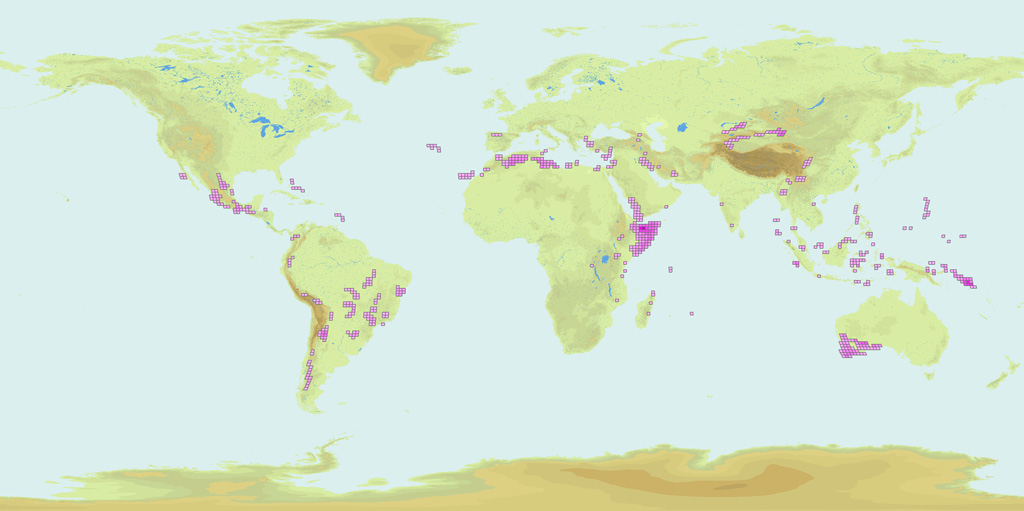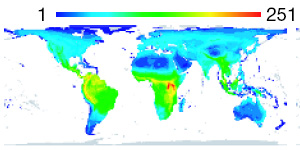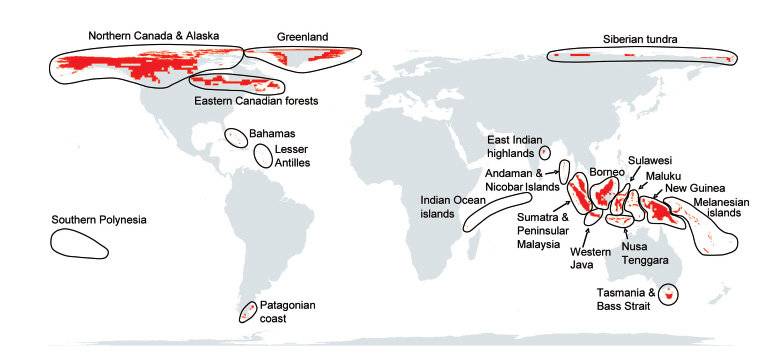Biodiversity is distributed unequally across the globe, with
at least 44% of vascular plants and 35% of vertebrates endemic to 25
biodiversity "hotspots". Human population size and growth are also
concentrated in these areas and thus potential catastrophic events
could occur if these areas are eliminated. Previosly we demonstrated
that, for primates and carnivores, significantly more evolutionary
history (343 million years) is endemic to the hotspots than expected
under a random model of extinction (Sechrest et al. 2002).
However, a comparison of an area’s fauna against a random selection of
species may not be a true test of the worth of that area as a
conservation tool in protecting PD. We are currently evaluating
hotspots against comparable areas of the world’s surface, rather than
against random species selections of the same size, as being a fairer
test of their worth.
Preliminary analyses (1000 replicates) indicate that hotspot
ecoregions protect more PD than similar-sized ecoregion networks in
other places. This seems true for the whole phylogeny (p=0.001) and for
threatened (IUCN-rated Vulnerable or above) branches only (p <
0.001). Protecting all hotspot species leaves 14.6% of the mammal tree
at risk. With only 54 clades unprotected the majority of this history
is terminal branches (i.e. species). This rises to 21% if only those
species in parks are protected. This shortfall (300 species) can be
rectified by protecting species currently without representation in a
park.
Future work will assess whether hotspots are reservoirs of
high speciation rates, hold significant amounts of character diversity,
and indeed should be reevaluated in terms of which areas actually are
biodiversity hotspots when identified from modern GIS mapping records.



